The Robert B. Daroff Neuro-Ophthalmology Collection: Features a series of instructional video on eye movement disorders prepared in 1991. The original recordings were on 16mm film, mostly filmed in the 1960s and 70s in Dr. Daroff's laboratory at the University of Miami.
Robert B. Daroff, Professor and Chair Emeritus, School of Medicine, CASE Western Reserve University, University Hospitals - Case Medical Center.
NOVEL: https://novel.utah.edu/
TO
Filters: Collection: ehsl_novel_rbd
| Identifier | Title | Description | Subject | ||
|---|---|---|---|---|---|
| 26 |
 |
Daroff_03-10 | Ocular Dysmetria | Upon attempted refixation, patients with this cerebellar eye sign over-shoot and oscillate, before eventually reaching their intended targets. Two patients demonstrate this disorder. | Cerebellar Dysmetria; Ocular Dysmetria; Other Saccadic Abnormalities |
| 27 |
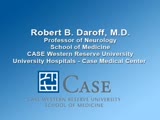 |
Daroff_03-11 | Anatomy and Physiology of the Saccade System | Saccades depend on a pulse-step firing pattern that allows an initiation of the saccade (pulse), and maintenance of the new eye position in space (step). This video explains the anatomical pathway for this type of activation. The burst cells, which lie in the PPRF, generate the pulse, while the nu... | Saccades; Saccadic Eye Movements; Supranuclear Input |
| 28 |
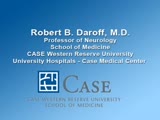 |
Daroff_03-12 | Anatomy and Physiology of Nystagmus | The role of the cerebellum in modifying the output of the neural integrator is discussed. Impaired integration causes jerk nystagmus with increasing or decreasing velocity exponential slow phases. | Nystagmus |
| 29 |
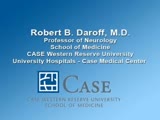 |
Daroff_03-13 | Pause Cell Dysfunction: Ocular Flutter | Burst neurons are tonically inhibited by the pause neurons, which lie in the nucleus raphe interpositus. Lesions of the pause neurons result in ocular flutter. | Ocular Flutter |
| 30 |
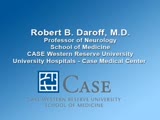 |
Daroff_03-14 | Ocular Flutter | Ocular Flutter, a disorder characterized by intermittent, rapid, horizontal movements in primary position, is demonstrated in this video. | Ocular Flutter |
| 31 |
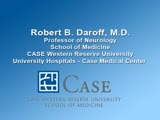 |
Daroff_03-2 | Periodic Alternating Nystagmus | A patient with PAN is shown with a discussion of its appearance and etiology. | Periodic Alternating Nystagmus |
| 32 |
 |
Daroff_03-3 | Nystagmus Nomenclature | A brief discussion of the various types of nystagmus is provided. | Nystagmus |
| 33 |
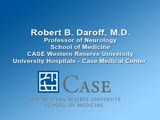 |
Daroff_03-4 | Downbeat Nystagmus | Primary position downbeat nystagmus is demonstrated, with a list of the common causes. | Downbeat Nystagmus |
| 34 |
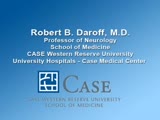 |
Daroff_03-5 | Chiari Malformation: Eye Movements | The eye movement disorders commonly accompanying Chiari malformations are listed. These are generally the same as with lesions of the cerebellum. | Arnold-Chiari Malformation; Eye Movement Disorders; Chiari Malformation |
| 35 |
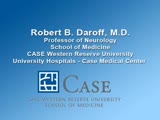 |
Daroff_03-6 | Upbeat Nystagmus | A female patient with upbeating nystagmus that increases in amplitude with upward gaze is shown. This type of nystagmus commonly occurs from a lesion involving one of three regions: the ponto-medullary junction, ponto-mesencephalic junction, and the anterior cerebellum. Etiologies of these lesions... | Upbeat Nystagmus |
| 36 |
 |
Daroff_03-7 | Alexander's Law | This describes the observed increase in vestibular nystagmus with gaze in the direction of the fast phase, and its decrease with gaze in the slow phase direction. | Alexander's Law; Vestibular Ocular System; Vestibular Nystagmus |
| 37 |
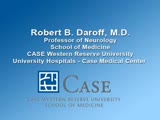 |
Daroff_03-8 | Up-beat Nystagmus with Palatal Myoclonus | A woman who appears to have upbeat nystagmus is also noted to have palatal, labial, and sternocleidomastoid myoclonus. | Up-beat Nystagmus; Palatal Myoclonus |
| 38 |
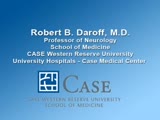 |
Daroff_03-9 | Ocular Palatal Myoclonus | The relevant anatomy of this disorder involves the inferior olivary nucleus, projecting via the restiform body to the contralateral dentate nucleus, traveling to the contralateral red nucleus via the superior cerebellar peduncle, and finally back to the inferior olivary nucleus via the central tegme... | Ocular Palatal Myoclonus; Oculopalatal Myoclonus; Oculopalatal Tremor |
| 39 |
 |
Daroff_04-1 | Opsoclonus in an Infant | An infant with Infantile Opsoclonus-Myoclonus ("Dancing Eyes, Dancing Feet"), with a likely underlying neuroblastoma is shown and the differential diagnosis of opsoclonus in infants and children is listed. | Opsoclonus |
| 40 |
 |
Daroff_04-10 | Eyelid Nystagmus | Lid nystagmus is of three types. The most common is associated with vertical ocular nystagmus with the lid movement being synchronous with the eyes, but with greater aplitutde. The second type is associated with gaze evoked horizontal nystagmus and may occur in the lateral medullary syndrome. A p... | Eyelid Nystagmus |
| 41 |
 |
Daroff_04-11 | Recording and Modeling Eye Movements | A brief discussion of the power and perhaps limitations of eye movement modeling is presented. | Eye Movement Disorders; Eye Movement Measurements |
| 42 |
 |
Daroff_04-12 | Eye Movement Modeling; Eye-Ear Tricks | A surgical resident was able to combine eye and ear movements as a party trick, to intimidate a first year neurology resident. | Eye Movement Modeling; Eye-Ear Tricks |
| 43 |
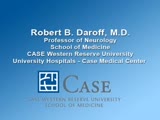 |
Daroff_04-2 | Opsoclonus | The differential diagnosis in adults is presented, followed by probably the most dramatic example of this disorder ever filmed. The father of American Neuro-ophthalmology, Dr. Frank Walsh, gave a copy of the film to Dr. J. Lawton Smith who, in turn, gave a copy to me. | Opsoclonus; Saccadomania |
| 44 |
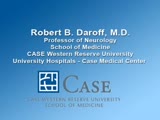 |
Daroff_04-3 | Square Wave Jerks | These are the most common ocular oscillations, since they occur in normals, particularly in the elderly and in many neurological disorders. They fall under a category called "saccades intrusions." A man with very subtle square waves is presented, followed by a woman with larger amplitude square wav... | Square Wave Jerks |
| 45 |
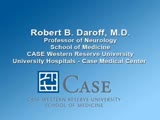 |
Daroff_04-4 | Macro Square Wave Jerks | A woman with multiple sclerosis has a postural tremor and macro square wave jerks. These indicate a cerebellar outflow problem. Macro square wave jerks are somewhat of a misnomer since the eye movements are not entirely square; an alternate descriptor is "square wave pulses." | Macro Square Wave Jerks |
| 46 |
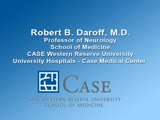 |
Daroff_04-5 | Voluntary Nystagmus | In this video, a woman shows her ability to voluntarily induce an ocular oscillation. It is called "voluntary nystagmus", although the oscillation consist of back-to-back saccades, such as occurs in ocular flutter. Clues to the voluntary nature of this oscillation are mentioned. At times, however, ... | Voluntary Nystagmus; Voluntary Flutter |
| 47 |
 |
Daroff_04-6 | Pause Cell Dysfunctions | This reviews the ocular oscillations caused by pause cell dysfunctions. | Pause Cell Dysfunctions |
| 48 |
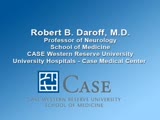 |
Daroff_04-7 | See-saw Nystagmus | Two patients with see-saw nystagmus are presented. The nystagmus is usually due to a suprasellar lesion associated with a bitemporal hemianopsia or a rostral midbrain lesion. The nystagmus is conjugate and torsional with a dissociated vertical vector so that the intorting eye rises and the extortin... | See-saw Nystagmus; Seesaw Nystagmus |
| 49 |
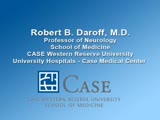 |
Daroff_04-8 | Superior Oblique Myokymia | This eye movement abnormality presents with intermittent monocular oscillopsia, often following a particular eye movement or head tilt. The examiner will often miss the abnormality unless it can be provoked. It represents a microtremor of a superior oblique muscle and usually responds to an anticon... | Superior Oblique Myokymia; Trochlear Nerve Disease |
| 50 |
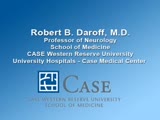 |
Daroff_04-9 | Ocular Bobbing | This is characterized by an initial fast phase downward, followed by a slow phase up, which is the reverse of nystagmus, where a corrective fast phase follows the slow phase. Most patients with bobbing have a large pontine lesion and are comatose with paralyzed horizontal eye movements. The patien... | Ocular Bobbing; Ocular Motility Disorders |
